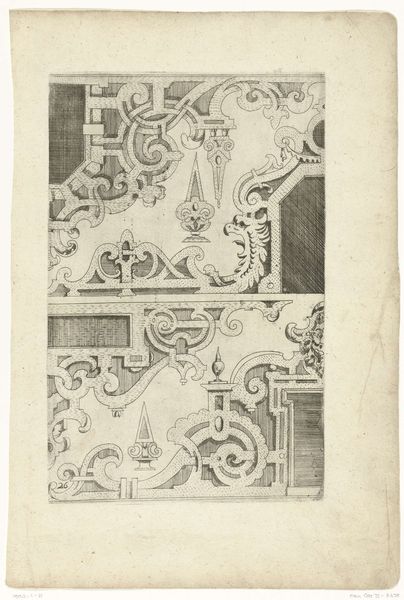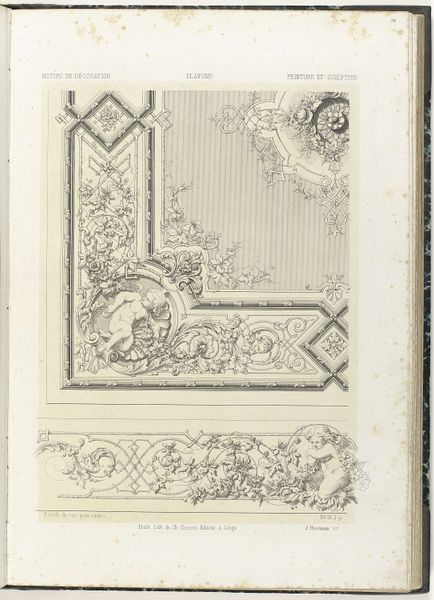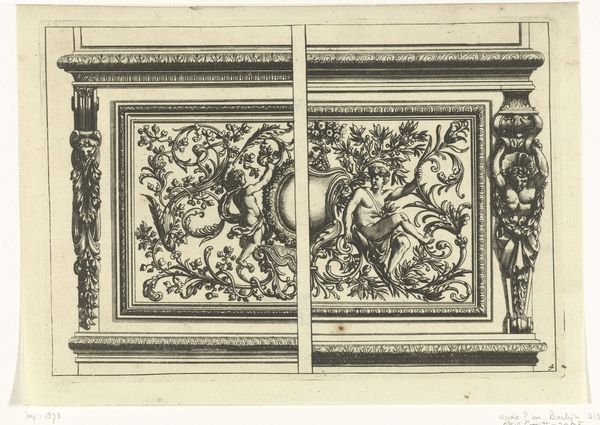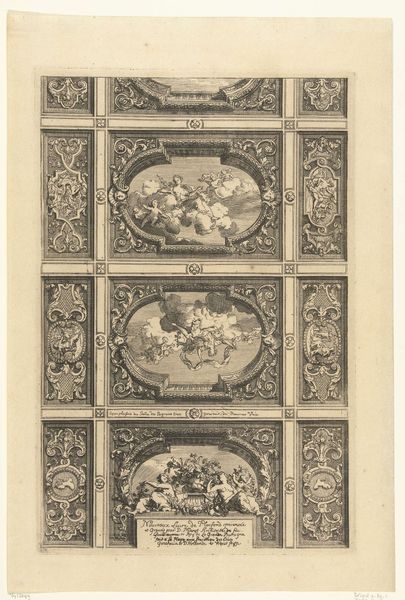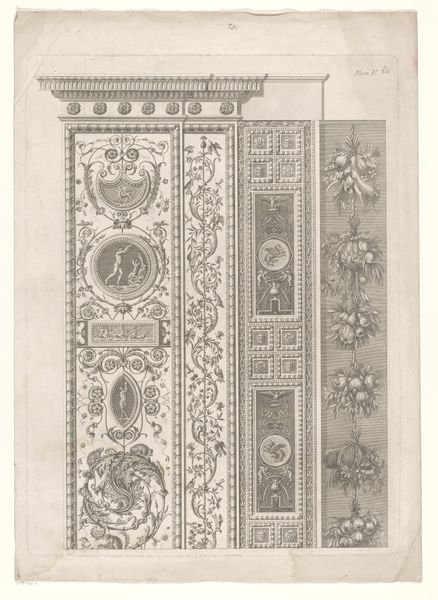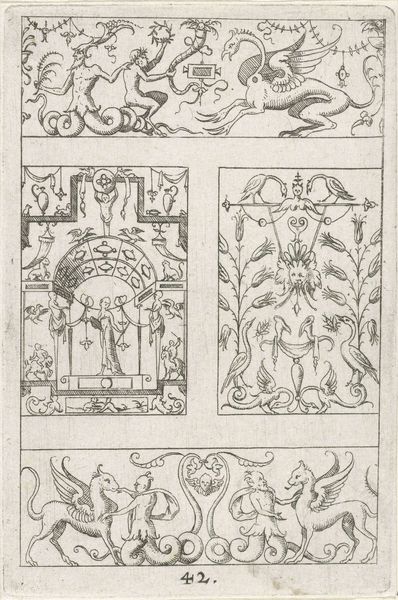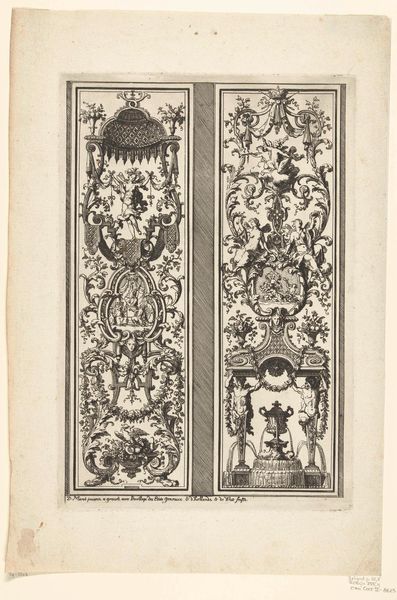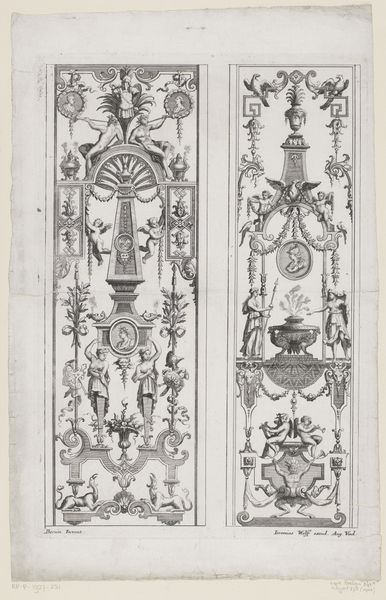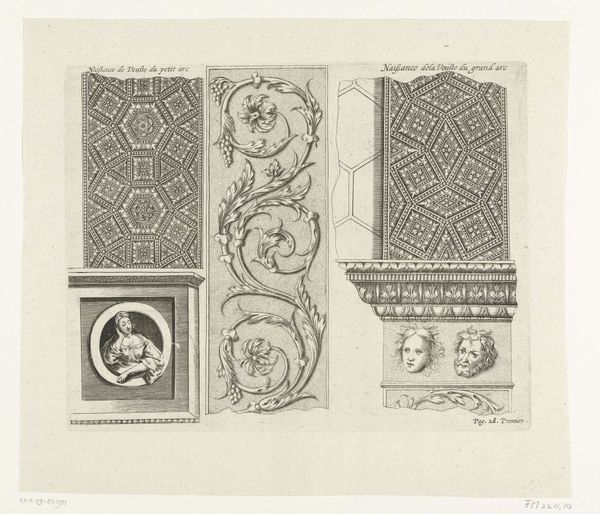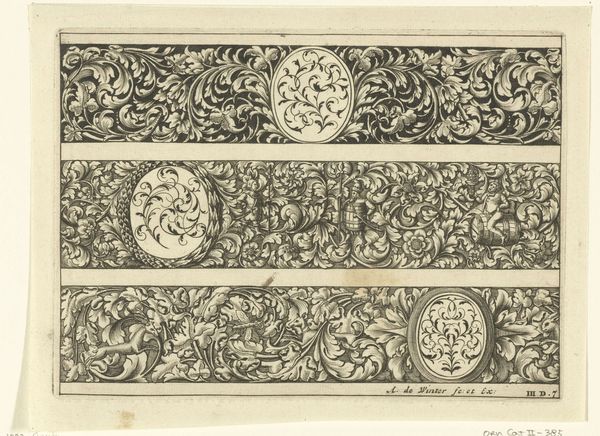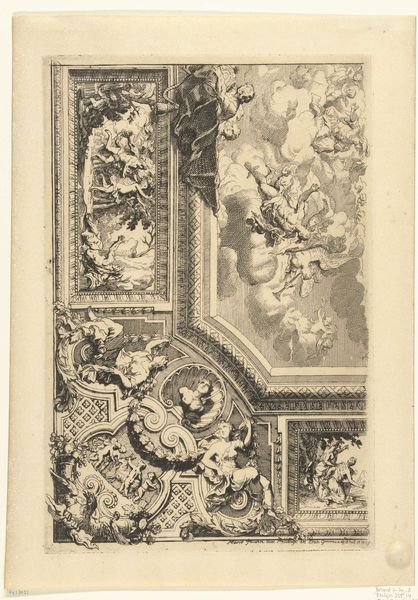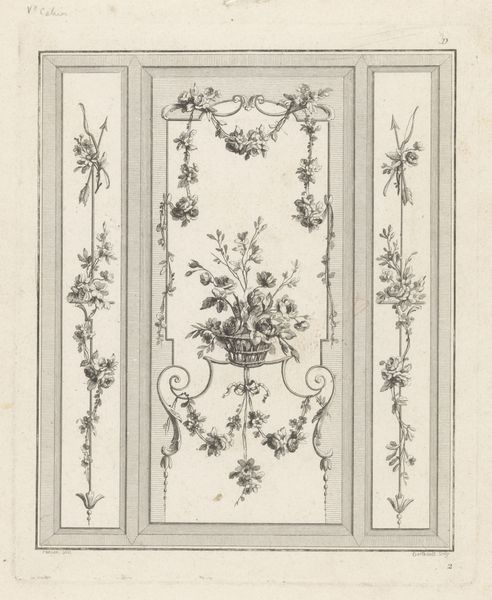
print, engraving
#
baroque
# print
#
form
#
line
#
decorative-art
#
engraving
Dimensions: height 361 mm, width 228 mm
Copyright: Rijks Museum: Open Domain
Curator: What immediately strikes me is the overwhelming detail and meticulous execution of this print. Editor: Indeed. We're looking at "Statiekoets van de hertog van Ossuna, 1713," though it was actually created in 1714 by Bernard Picart. This engraving showcases designs for the Duke of Ossuna's carriage, exhibiting the height of Baroque decorative arts. Curator: Baroque, certainly, oozing luxury and power! Those swirling lines, the floral motifs, even the little cherub...it's a total performance of status. Knowing that this would adorn the Duke's carriage positions him quite literally as mobile spectacle. What are your thoughts on the intended public it served? Editor: The print itself would have been part of a broader visual culture of disseminating taste and fashion. It would have likely circulated amongst artisans, other members of the aristocracy, or aspiring gentry looking to emulate elite aesthetics. Curator: So, almost instructional. Do you see it then democratizing style in any way? While visually representing the Duke’s position, it simultaneously offers tools for others to reproduce similar elements of power, even if at a lesser scale. Editor: Democratizing perhaps, but also reinforcing hierarchies. While more people might be exposed to these designs, it doesn’t necessarily mean they had access to the resources or skills needed to implement them fully. Furthermore, its production is occurring while Europe is actively engaged in colonizing. Whose labour actually produced such decorative features? The circulation of wealth generated by a brutal social and political reality underpinned all that finery. Curator: Exactly, there is a darker context here! These intricate designs served not only an aesthetic purpose but also masked and diverted from realities of injustice, as ornamentation and art serve in countless contemporary contexts today. Editor: Well, on a purely aesthetic level, I appreciate how the engraving uses line and form to create a sense of depth and movement despite the monochromatic medium. Curator: The print is quite dense and ornate. Today it really challenges us to consider its historical moment and the various levels on which we can discuss and assess it. Editor: It certainly provides an invitation to think critically. Hopefully, by viewing these details in conversation, the audience leaves with a better awareness of how to read design as a product of power.
Comments
No comments
Be the first to comment and join the conversation on the ultimate creative platform.
